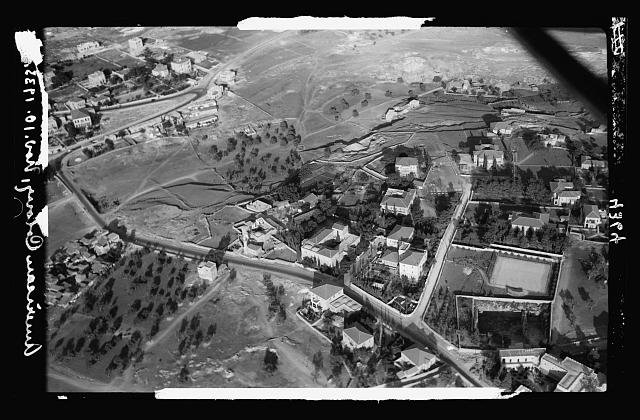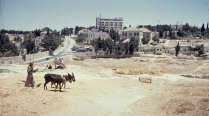Salim al-Husseini, mayor of Jerusalem between 1879 and 1897, built the palace that is now Dar al-Tifl Institution in Sheikh Jarrah.
Al-Husseini Family
Salim al-Husseini came from the prominent al-Husseini family of Jerusalem.
Al-Husseini was the father of Musa Kazim and Hussein, both of whom assumed the post of mayor of Jerusalem after their father.
Hussein, the younger son, surrendered Jerusalem to the British on December 9, 1917. He was also the great-grandfather of Faisal al-Husseini.
Mayor of Jerusalem
Al-Husseini served as mayor of Jerusalem for the better part of 18 years, between 1879 and 1897.
In addition to serving as mayor of Jerusalem, al-Husseini was a member of the Administrative Council of Jerusalem.
He introduced many improvements to the city. For example, he built the public sewage system in the Old City of Jerusalem and paved the streets; installed the first streetlights; and planted trees along Jaffa Road. He also improved the cleanliness of the city by hiring the first garbage collectors and limiting the access that animals had to many streets in the city, reducing the accumulation of their droppings.
Patron and Friend
Al-Husseini was the patron and close friend of Wasif Jawharriyeh, a Greek Orthodox Arab and Jerusalemite who was a self-taught chronicler and musician who left behind a prodigious diary. Jawharriyeh’s father also worked for al-Husseini and served on the municipal council under him.
In his diaries, Jawharriyeh recalled that al-Husseini was much beloved by the fellahin. He was popularly known as al-Shakir, the Benefactor.
Palace in Sheikh Jarrah
Al-Husseini was a landowner with access to properties. His brother Rabah was the first family member to build a house in Sheikh Jarrah—it later became the iconic American Colony Hotel—and in 1882, Salim built a palace in the Sheikh Jarrah neighborhood of Jerusalem for his family next door to his brother’s house. By 1894, the Husseini family had six houses in the neighborhood, and it became their stronghold.
His granddaughter Hind al-Husseini would later convert Salim’s palace into Dar al-Tifl, an orphanage that became a prestigious national educational institution. It still functions today and includes a museum, nursery, kindergarten, and educational training facilities.
Death and Burial
Al-Husseini passed away in 1908. He is buried in the Sheikh Jarrah neighborhood of Jerusalem, reportedly nearby the American Colony Hotel.
Sources
Jawhariyyeh, Wasif. The Storyteller of Jerusalem: The Life and Times of Wasif Jawhariyyeh. Edited by Salim Tamari and Issam Nassar. Translated by Nada Elzeer. Northampton, MA: Olive Branch Press, 2014.
Library of Congress. “The Surrender of Jerusalem to the British December 9th, 1917. Hussein Selim el-Husseini Who Surrendered Jerusalem.” December 9, 1917.
Manna‘, ‘Adil. “Hussein Salim al-Husseini: Palestine’s Personalities at the End of the Ottoman Period.” [In Arabic.] October 6, 2010.
Palestinian Academic Society for the Study of International Affairs (PASSIA). “Salim Effendi (Haj).” Accessed July 17, 2021.
Palestinian Journeys. “Musa Kazim Husseini.” Accessed July 18, 2021.
Pappe, Ilan. The Rise and Fall of a Palestinian Dynasty: The Husaynis, 1700–1948. London: Saqi Books, 2010.
Sheehi, Stephen. “Portrait Paths: Studio Photography in Ottoman Palestine.” Jerusalem Quarterly 61 (Winter 2015): 23–41.
Wikipedia. s.v. “Salim al-Husayni.” Last modified July 23, 2020, 02:48.
Wikipedia. s.v. “Salim al-Husseini.” [In Arabic.] Last modified July 17, 2021, 08:57.


